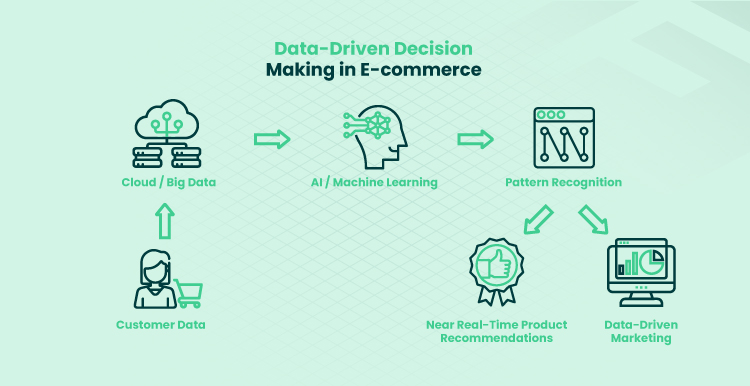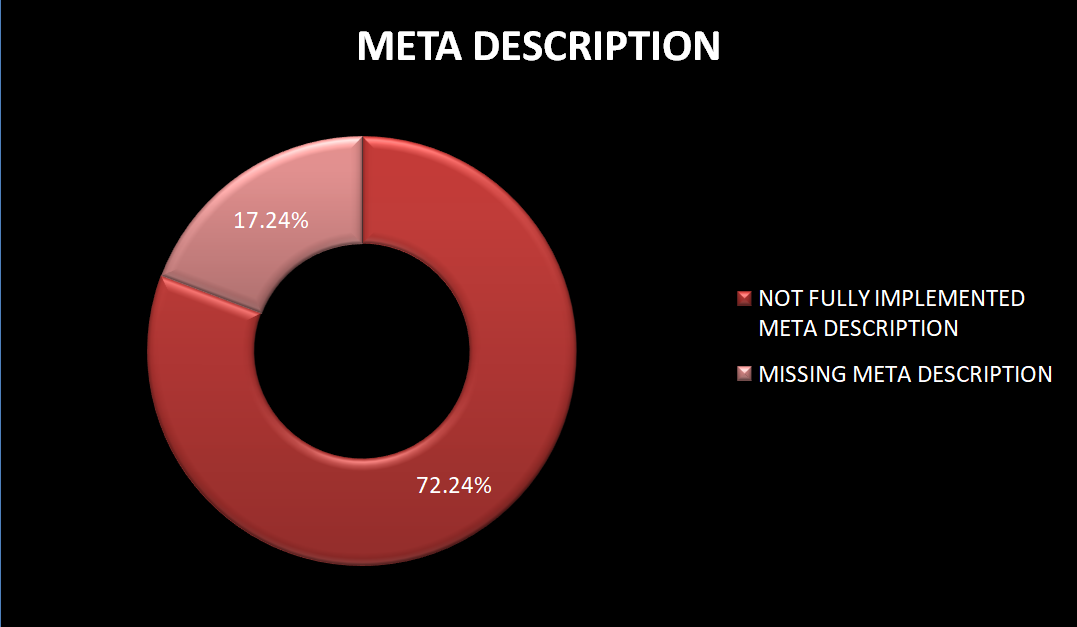Page Contents:
E-commerce Websites
An eCommerce website is a platform to buy and sell physical goods online. With digitalization, e-commerce businesses are growing exponentially. According to e-commerce platforms, the volume of digital buyers globally in 2019 was over 2 billion.
There was a huge shift of customers from the physical market to e-commerce shopping during and after covid. The farmers to wholesalers, almost every category of business has become online. UNCTAD conducted the survey, stating that covid has boomed the e-commerce market.
With such an increase in digital marketing, many mistakes by e-commerce websites result in declining sales. Let us now discuss the mistakes made by e-commerce websites :
1. Lack Of Proper Product Description
Clothing and accessories brands usually commit these mistakes. The description they post with the product is either too short or too long. Sometimes the description doesn’t even carry proper details of the product.

Precaution
- The quality description should be added, like the product’s material, textures, colour, patterns, etc.
- Avoid copying the description as there are many similar products online, and your site will be penalized for doing so.
- Extra content that is not required or unnecessary should be avoided as no one likes to read so much while shopping.
- Do not copy the description given by manufacturers, as they may be giving the same description to all their customers.
2. Lack Of Product Review
Product reviews are the customers’ perspective about the product in which they share their product-using experience. Reviews influence the decision-making of the customers.
Positive reviews attract sales, while negative reviews are more eye-catching for the audience. Many consumers hang back if there are no reviews. These reviews build an emotional connection with the consumers and your product’s reliability.

According to research by Frontiers in Psychology
- 60% of consumers browse reviews once a week
- 93% believe reviews help them improve their choice of products and accurate purchases on Business 2 business and Business 2 consumer platforms,
- 82%consumers read product reviews before buying.
Precaution
- To keep checking on the reviews of the consumers already having your products.
- Work on the quality of products.
- Reviews should be from genuine customers.
- Understand the data driven decision making of customers.

3. Not Optimizing Page Product Demands
Brands often don’t consider optimizing an important aspect affecting their sale. E-commerce websites are different from others. Therefore they require different optimization strategies. The websites use automated optimization, use wrong structural data or may have broken links, the slow speed of page loading etc.
Precaution
- Don’t use automated optimization
- Don’t use keywords which do not have search volumes.
- Try to put crisp structural data, but it should not be too short
- Don’t remove seasonal and out-of-stock pages from the website
4. E-commerce Websites’ Content Mistakes
Good quality product content is important for e-commerce websites as well. Content quality is a deciding factor for almost all aspects of e-commerce websites. Online shopping involves the virtual evolution of products. For this purpose, consumers are solely dependent on the product content available.
Most of the e-commerce website have very thin content; 73% of e-commerce websites have low word count problems due to insufficient product detail. 83% of websites use duplicate content, affecting only 7.8% of the webpage. 96.9% of e-commerce websites are running on a low text-to-HTML ratio. This happens when you use too many html codes for small parts of the websites affecting 84.4% of the web page.
Most websites create their own content management systems that may not follow the SEO standards. Bad quality images, a poor mix of videos and other content.
Precaution
- Know your audience and product very well;
- Provide a unique, engaging and detailed product description;
- Should have he material description.
- Use narrative form of product description
5. E-commerce Websites’ Mistakes On Meta Description
META DESCRIPTION is an attribute of HTML that briefly describes the website’s content or an image in 150-200 words. For e-commerce websites, meta tags and meta descriptions may help in visibility on the search engine result page and the SEO ranking.
According to the surveys done by SEMrush, 72.4% of e-commerce websites have not fully implemented the meta description, 17.24% of their pages are missing meta description, 89.43% have a meta description that duplicates, and 13.20% of their page is an exact copy of meta description from other sources.

Web developers often write too long or too short meta descriptions; this adversely affects the chances of your website getting clicked by the users. The best word limit for meta description is 120-160 characters.
Meta descriptions should be a compact reflection of page content. Sometimes the meta description is inconsistent with the page description due to a lack of attention.
Using keywords is a clever move, but in some cases, the meta description lacks keywords or is too much stuff with them. In either case, the meta case will not help you.
The meta description should be crisp and appealing. It should attract consumers and create of sense of urgency.
Some meta descriptions are confusing because of small incomplete phases which do not covey proper information.
Precautions:
- Do not copy the meta description; try to make it creative and unique.
- Strictly consider the length of the description; it should not be too long or too short.
- The meta description should summarise the page content in a creative form.
6. Ecommerce Websites’ Title Tag Mistake
Since title tags are the first impressions of any visitors, they should be very creatively structured. The irony is 35.75% of e-commerce web have missing title tags affecting 5.58% of the page. 87.60% of those with title tags have h1 tags, which applies to about 16.59% of the page.
55.56% have short title tags striking 3.46% of the page. 84.67% have long title tags affecting 17.94% of their site page.The title tags also have content-related issues 90.11% of the e-commerce have duplicate title tags influencing 10.30% of their page.

Precautions:
- The title tags should be precise.
- They must have keywords
- Prioritize uniqueness
- Should have a standard size.
7. Complicated Ecommerce Website
E-commerce website often makes the buying or payment procedure very complex. The navigations of the website are complex and make it difficult to use. These complexities make users confused and leave your site. Thus affecting the overall performance of your website; reduce sales and traffic. The checkout process is also difficult to work on.
Precautions;
The only way to tackle this mistake is to make your website as simple as possible so that a new user can easily navigate and shop through your website.
8. Ecommerce Websites’ Image Mistakes
The images are the most important element of the website. It creates the impression of the site on the buyers. Good product images upgrade the product description influencing the visitors to buy the product.
Images persuade 87.6% of the total e-store sales.86.24% of e-commerce sites have missing alt attributes affecting 17.67% of the page.
However, the case for broken images has improved 13% of the e-commerce websites have broken external images, while 29.51% have set up broken internal images. It governs 4.52% and 1.08% of the page, respectively.
Many images on e-commerce websites have unoptimized images resulting in low page loading speed and low picture quality.

Precautions:
- Post good-quality images with optimized sizes.
- Practicing 360-view photography is the best way to show all the product details.
- Choose different product angles and proper image proportions.
- Sites not setting image links, use the image lazy load technique.
- Include broken image links and upload high-resolution images for appealing images.
9. E-commerce websites’ crawlability mistakes
Search engines send search engine crawlers to identify and evaluate the page’s content. 70% of the e-commerce websites have blocked bots from crawling, affecting 15.67% of their page.A frequently observed mistake of e-commerce websites is not linking the internal product pages properly.
23% of webs are experiencing temporary redirect issues striking 32.6% of their page. 25% of e-commerce websites have permanent redirect issues affecting 4.3% of their pages.58% of e-commerce stores have 4xx errors, affecting 2.5% of their page.
Precautions:
- Strengthen internal linking of pages.
- Do not include broken page redirects.
- Regularly update your content.
- Submit sitemaps to google.
10. Ecommerce Site Structure And Technical Mistakes
Structural and technical errors affect the users’ experience and the website’s performance. Common structure and technical errors are as follows.
- 38.86% of sites do not have sitemaps, and of those with them,
- 38.63% have incorrect site maps. URLs of many websites are not appropriately structured.
- 22.28% have long URLs, and 27.53% use many URL parameters.
- 54.83% use underscore in their URLs.
- 54.33% have compressed Javascripts and CSS files.
- 79.54% have unminified Javascripts and CSS files.
- 79.85% have a slow page loading speed
Precautions:
- Use hierarchical order of pages to create site maps.
- Have defined simple URLs with proper characters.